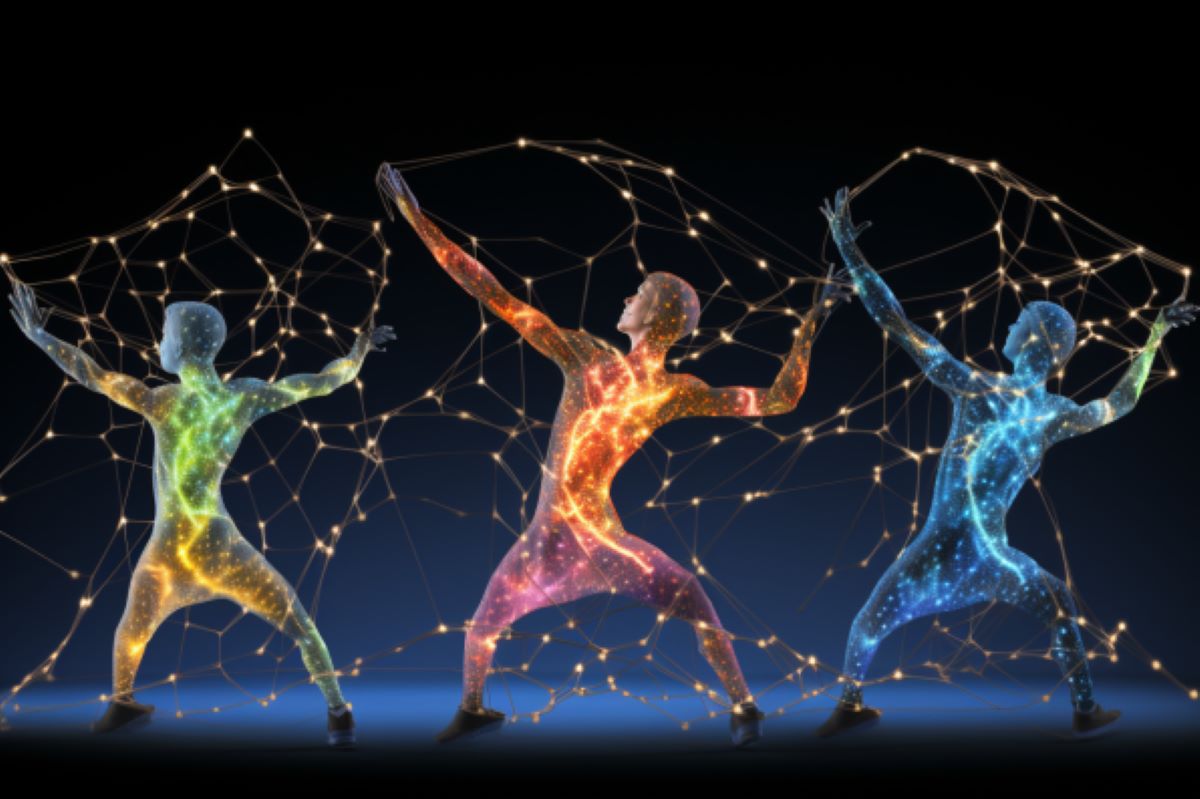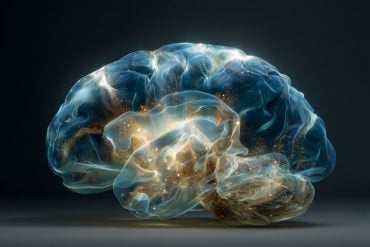Summary: Zebrafish, with their transparent bodies, are offering neuroscientists a unique insight into the intricacies of brain-controlled movement.
Researchers zoomed in on the zebrafish’s brain to understand the neural choreography of motion. Through a novel analytical approach, the study identified two primary circuits in the hindbrain, one responsible for eye rotation and another for body stabilization.
This innovative method holds potential for understanding neurological disorders and applications in robotics.
Key Facts:
- Zebrafish, popular in neuroscience research, are paving the way for an in-depth understanding of how brains control motion.
- Researchers have unveiled two central brain circuits in zebrafish: one for eye rotations and the other for body stabilization and eye vergence.
- The new analytical approach used can be a powerful tool for other researchers, offering insights into sensory-motor translation and aiding robotic designs.
Source: Champalimaud Centre for the Unknown
The zebrafish brain, though simpler than its human counterpart, is a complex network of neurons that engage in a ceaseless dance of electrical activity. What if this neural ballet could reveal the secrets of how brains, including our own, control movement?
A zebrafish study led by researchers at the Champalimaud Foundation offers a new lens through which to view the activity of neural populations, and to understand how the brain orchestrates motion.
Why we have a brain
“The brain’s primary function is movement”, explains Claudia Feierstein, lead author of the study published today in Current Biology.
“Plants don’t need a brain because they don’t move. Yet, even for something as seemingly simple as eye movements, the brain’s role remains largely enigmatic. Our goal is to illuminate this ‘black box’ of motion and to decode how neural activity controls eye and body movements, using zebrafish as our model organism”.
With their tiny transparent bodies, zebrafish have become the darlings of neuroscience, offering a unique window into brain function. “Eye movement is a circuit that’s conserved across species, including humans”, notes Feierstein.
“If we can understand how it works in zebrafish, we can start to understand better how human brains do movement”. Zebrafish, like humans, possess an innate ability to stabilise their vision and position in response to movement. When the world around them spins, their eyes and body move in tandem to maintain stability. This is akin to us steadying our gaze on a fixed point while on a merry-go-round.
But how does the brain coordinate this behaviour? Previous research by the team had shown that different parts of the zebrafish brain were associated with different types of movements. However, the precise relationship between these brain areas and the actual behaviour remained unclear.
“While we know that neurons are involved in detecting visual stimuli (the input) and controlling muscles (the output), we remain in the dark about the processing in between”, remarks Feierstein. Complicating matters is the plethora of stimuli to which neurons respond and the staggering amount of data captured by whole-brain imaging studies.
“When you have tens of thousands of neurons and 100 different possible behaviours that they could encode, it’s not trivial to understand what is going on”.
As Michael Orger, one of the two senior authors, elaborates, “When you look at the activity of individual neurons, you find that they can respond to multiple behavioural variables. This makes it challenging to pinpoint what exactly is driving their activity”.
This leads to a complex interplay between neurons and behaviour, where individual neurons can be involved in multiple types of movements.
A New Analytical Approach
To tackle this challenge, the researchers initially used a statistical method known as linear regression to explore the relationship between behavioural variables and neuronal activity.
However, they quickly realised that examining neurons one by one did not provide a clear understanding of the overall picture. It was like trying to understand a grand-scale dance performance featuring hundreds of dancers by only watching one dancer’s moves.
“We started by looking at individual neurons but soon realised that we needed to understand the ensemble, the whole dance troupe if you will”, says Feierstein.
“So we incorporated what’s known as a ‘dimensionality reduction’ step in our analysis to get a zoomed-out view of what the population of neurons is doing”.
As Christian Machens, the study’s other senior author, points out, “We wanted to know: how does the overall activity that we measure relate to behaviour? How can we boil down the activity of tens of thousands of neurons to its essential features?
“It took a considerable amount of time to develop the analytical approach for this. But once we managed to overcome these challenges, we could finally ask: how does the overall activity of these neurons relate to specific behaviours, like eye movement or swimming?”.
In the study, zebrafish were embedded in agarose, a gel-like substance, to keep them in a fixed position so that the researchers could image the brain. The agarose near their eyes and tails was removed to allow for movement. “We then put images on a screen below the zebrafish and recorded brain activity with a fluorescent dye through a microscope”, describes Feierstein.
Unveiling the Brain’s Choreography
By applying their analytical approach to a region of the zebrafish brain called the hindbrain, the researchers were able to condense the cacophony of neuronal activity into two main ‘features’, or patterns of activity, that corresponded to specific types of movements, and are presumably generated by separate circuits in the zebrafish hindbrain.
The first circuit they found is primarily concerned with eye movements, specifically the rotation of the eyes, either clockwise or anti-clockwise. Imagine a fish seeing something spin around in its environment. To keep a stable view of this spinning object, the fish’s eyes also rotate, and its tail may move.
Essentially, this circuit helps the fish adjust its eyes to keep a constant and stable image of what it’s seeing.
As Feierstein elucidates, “It’s like the brain’s way of saying, ‘Okay, the world is spinning around me, I need to move my eyes to keep track of it’”. Moreover, the researchers discovered that neurons associated with leftward and rightward rotation were anatomically segregated in the left and right hemispheres of the brain, respectively.
The second circuit is more involved in what researchers call ‘vergence’ and tail movement. Vergence is the ability of the eyes to move in opposite directions – both eyes moving towards or away from the nose – in response to stimuli. This circuit comes into play when the fish perceives a stimulus moving from back to front.
Feeling as though it’s drifting backward, the fish swims forward to stabilise its position. At the same time, its eyes converge to maintain a stable image. Consequently, this circuit helps the fish adjust its body and eye movements to stay in a stable position.
As Orger summarises, “One brain circuit is primarily concerned with eye movements, particularly rotation, to maintain a stable image on the retina. The other circuit is mostly involved in body movement, particularly swimming, in response to visual stimuli to maintain a stable position in the environment.
“These circuits help the fish adapt to changes in their environment, allowing them to maintain a stable view and position. While the exact mechanisms are still not entirely clear, the study provides valuable insights into how separate circuits in the brain control different types of movements”.
What surprised Feierstein and her team the most was the robustness of their findings.
“We found these circuits consistently across each individual fish”, she notes. The study suggests that these circuits are neither purely sensory nor purely motor but lie somewhere in between, possibly translating sensory information into motor actions. In essence, the researchers may have found two different “choreographers,” each directing their own set of movements to help the fish interact effectively with its environment.
A Simpler Perspective on Complexity
The team’s research not only enhances our understanding of how the brain controls movement but also introduces an analytical method to the field that could serve as a valuable tool for other researchers.
“The nice thing about this method”, says Feierstein, “is that it can be used by other scientists to better understand the link between neural activity and behaviour”.
The study’s findings could potentially open up new avenues for understanding conditions where the translation of sensory information to motor commands might be disrupted, such as in certain neurological disorders.
Furthermore, the results could inspire new approaches in robotics and machine learning, where the concept of translating sensory data into movement is a fundamental principle.
For Machens, “The analytical technique we developed underscores a critical insight: while individual neurons can be incredibly complex, at a population level, their behaviour can be distilled into simpler patterns. It’s a reminder that sometimes, to understand the intricate dance of the brain, we need to step back and view the entire ensemble”.
As for the next steps, Feierstein is keen on diving deeper.
“We’ve only scratched the surface. One of the things I want to try to do next is to look at the activity of different types of neurons, such as excitatory and inhibitory neurons, to see what is happening, and how they are involved in this process”.
In the grand ballet of the brain, each neuron plays a part, and thanks to this study, we’re one pirouette closer to understanding the choreography of movement.
About this neuroscience research news
Author: Hedi Young
Source: Champalimaud Centre for the Unknown
Contact: Hedi Young – Champalimaud Centre for the Unknown
Image: The image is credited to Neuroscience News
Original Research: Open access.
“Dimensionality reduction reveals separate translation and rotation populations in the zebrafish hindbrain” by Claudia Feierstein et al. Current Biology
Abstract
Dimensionality reduction reveals separate translation and rotation populations in the zebrafish hindbrain
Highlights
- Bilaterally independent visual stimuli decouple eye movements and elicit swimming
- In the dorsal hindbrain, activity related to the eyes and tail is low dimensional
- Neurons form clusters related to vergent and left/right rotational movements
- Rotation and vergence clusters have distinct anatomical organization
Summary
In many brain areas, neuronal activity is associated with a variety of behavioral and environmental variables. In particular, neuronal responses in the zebrafish hindbrain relate to oculomotor and swimming variables as well as sensory information.
However, the precise functional organization of the neurons has been difficult to unravel because neuronal responses are heterogeneous.
Here, we used dimensionality reduction methods on neuronal population data to reveal the role of the hindbrain in visually driven oculomotor behavior and swimming.
We imaged neuronal activity in zebrafish expressing GCaMP6s in the nucleus of almost all neurons while monitoring the behavioral response to gratings that rotated with different speeds.
We then used reduced-rank regression, a method that condenses the sensory and motor variables into a smaller number of “features,” to predict the fluorescence traces of all ROIs (regions of interest). Despite the potential complexity of the visuo-motor transformation, our analysis revealed that a large fraction of the population activity can be explained by only two features.
Based on the contribution of these features to each ROI’s activity, ROIs formed three clusters. One cluster was related to vergent movements and swimming, whereas the other two clusters related to leftward and rightward rotation.
Voxels corresponding to these clusters were segregated anatomically, with leftward and rightward rotation clusters located selectively to the left and right hemispheres, respectively.
Just as described in many cortical areas, our analysis revealed that single-neuron complexity co-exists with a simpler population-level description, thereby providing insights into the organization of visuo-motor transformations in the hindbrain.







